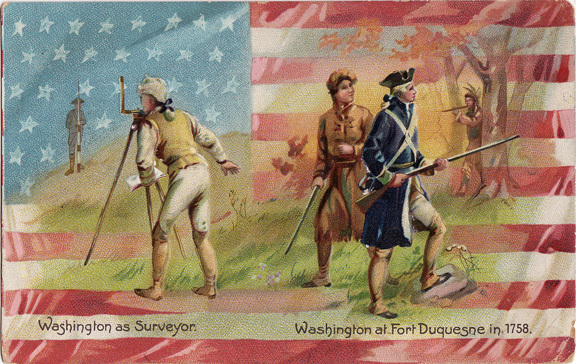
Mr. Newell was the surveyor of the railroad grade from the Erie Junction, (Carrollton, New York) to the town of Littleton (Bradford, Pennsylvania), then to the Lafayette, PA coal mine area. The survey was later changed to a lower hillside elevation in the Big Shanty area, near the valley floor of the East Branch Tuneangwant ( Tuna) Creek.
In the early spring of 1856, Augustus started the survey from the Erie Junction, which was almost impossible because of the hemlock swamps, dense underbrush, and the valley road conditions. The best way of moving along these roads was by a pair of oxen and a sled.
One oxen road traveled out of Littleton towards Lewis Run, PA, straight up Big Shanty hill to the town of Lafayette. The other branched off the Big Shanty road and crossed over the East Tuneangwant to the Minard Run Creek area.
By the year 1863, the B. B. & P. RR was built to the hamlet of Littleton (Bradford). The first railroad grade contractors were King and Loomis, then, John S. King.
The first wood-burning steam locomotive was leased to the railroad in 1863 and was called the “Orange.” I will talk later about the “Orange” locomotive.
The Big Shanty railroad grade was first considered on the high side of Big Shanty Hill road, but later was abandoned due to the difficulty and cost of digging tunnels through the hillside. It was told to me by a McKean County ‘Old Timer” that this also may have been another way for Daniel Kingsbury to locate more coal deposits, thus increasing the value of his lands.
The building of a railroad grade was not an easy task in those days. First, the land needed surveyed, finding the most convenient way through swamps, fields, creeks, and forests. The harshness of the land increased the cost of the construction.
One of the most famous surveyors in America was our first President, George Washington.

The civil engineers had to know the actual flow of water during the highest levels, usually spring time, so the culverts or bridges would be large enough to handle the flow without damning up, “under cutting” the construction, and washing away the culverts. Thus, surveying, the more creeks that had to be crossed, the more stone culverts or bridges that had to be built.